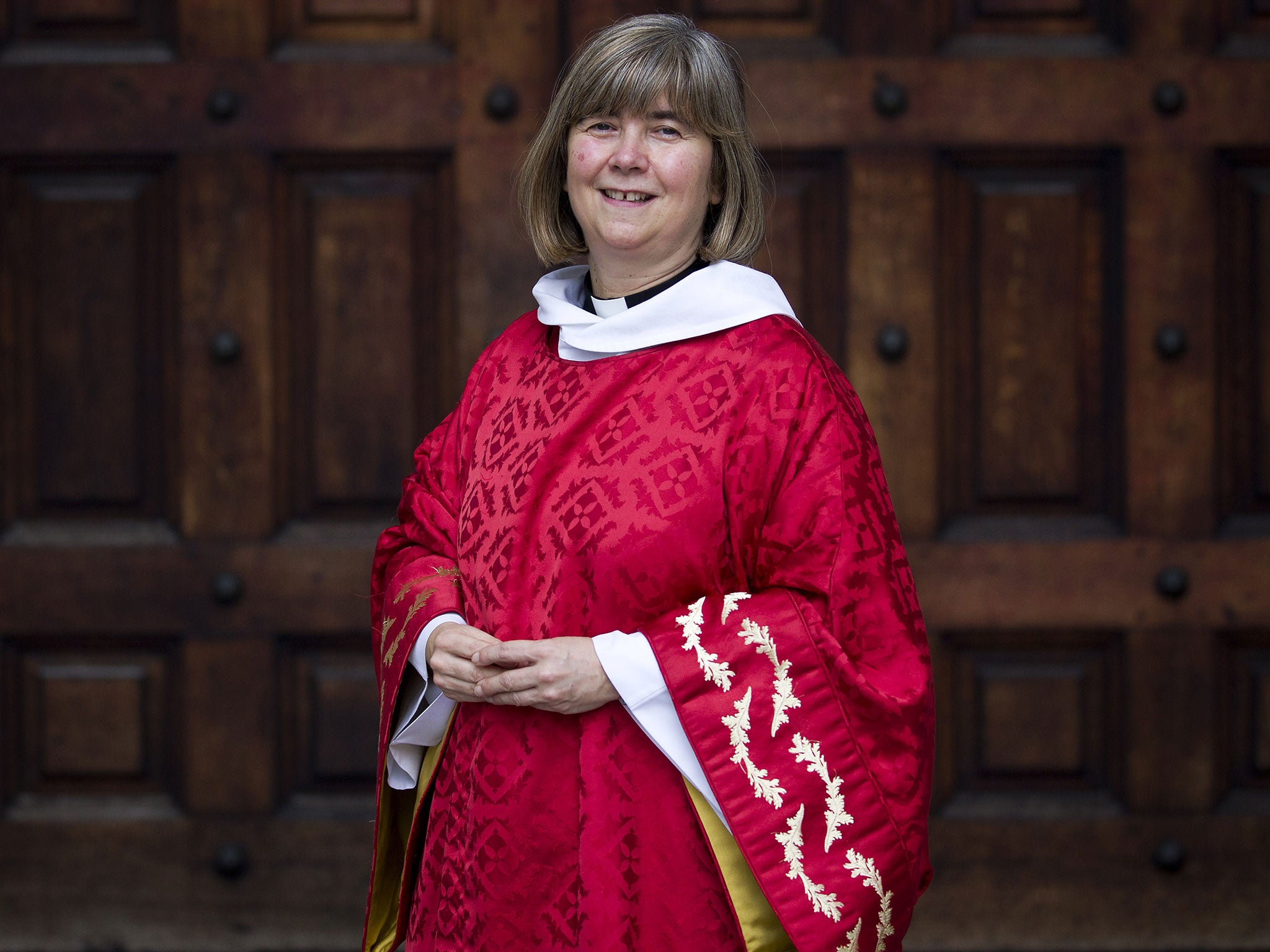Church of England to shatter ‘stained-glass ceiling’ and allow female bishops
First women expected to be appointed to highest office next year

It is an inequality dating back 2,000 years to the foundation of Christianity, but the restriction on women becoming bishops is expected to be swept away in just minutes at a historic meeting of Church of England leaders today.
The Anglican General Synod is expected to shatter the Church’s “stained-glass ceiling” this morning, when it signs off legislation changing the wording of “Canon 33” to read “a man or a woman may be consecrated to the office of bishop”.
Marking the culmination of years of campaigning and bitter internal dispute, the simple but long-awaited change will finally allow women to take the highest office within the Church of England, 20 years after women were first allowed to be ordained as priests.
The General Synod overwhelmingly backed legislation making the change in July and today’s procedural vote will rubber-stamp the move.
Hilary Cotton, chairwoman of Women and the Church, said she was hopeful the reform could eventually lead to “changing the culture of the church”.
The lay Synod member, who has been campaigning for women in the church for more than a decade, said: “It is not just about having women wearing purple, it is about changing the culture of the church to be more equal.
“It is exciting but I hope that in a few years it will be more normal for women to be appointed bishops.”
The Rev Rose Hudson-Wilkin, a vicar in two inner city parishes in Hackney, east London and chaplain to the House of Commons and the Queen, told The Independent: “What is of the utmost importance is that decisions about the life of the church are no longer going to be taken just by a group of men. Women will be able to sit at the table and make decisions.
“I think people – even those who have never darkened the door of a church – have been not only bemused but outraged that, in this day and age, there should be an organisation that is so caught up in itself and unable to look outward. I hope this will change the way people think of us.”
Ms Hudson-Wilkin said she had no ambitions to become a bishop herself, but hoped a good female candidate would come forward.
The first female bishop could be appointed by the end of the year, with the selection process already underway for the vacant Southwell and Nottingham diocese. Gloucester, Oxford and Newcastle are also set to be filled next year.
In a statement to the Crown Nominations Committee, which nominates potential bishops, members of Southwell and Nottingham referred to their future leader as “he or she” for the first time last week.
The Very Rev Vivienne Faull, the Dean of York; the Rev Dr June Osborne, Dean of Salisbury Cathedral; and Canon Philippa Boardman, Canon Treasurer of St Paul’s Cathedral, are among those widely tipped to be the first woman to take on a senior role.
The topic has been second only to gay marriage in dividing opinion and driving debate in the Church of England in recent years.
The first women were ordained in 1994 in the Church of England and they now make up about a third of clergy’s total numbers.
A previous bid to allow women to become bishops was defeated by six votes in November 2012, causing bitter recriminations within the church.
Synod member Christina Rees, who has campaigned for equality in the church for 25 years, said women should eventually make up a high proportion of senior roles.
She said it would change the public perception that the church had a “problem with women” and said there was nothing preventing a female bishop being appointed straight away.
“The stained-glass ceiling is finally being shattered,” she added.
The colour purple: Female frontrunners
Canon Philippa Boardman, 50, Canon Treasurer of St Paul’s Cathedral. Among the first women ordained in the Church of England in 1994, Ms Boardman was made an MBE in 2011 for her work to renovate the Church of St Paul in Old Ford, east London. She told The Guardian she was wearing something purple – the colour worn by bishops – every day in protest at the defeat of the women bishops legislation at the General Synod in November 2012.
The Very Rev Vivienne Faull, 59, Dean of York Minster. Frontrunner to be the first woman bishop. One of the first female priests ordained in 1994 and the first woman to run an English cathedral when she became provost of Leicester in 2000. Named Dean of York Minster in 2012.
The Very Rev Dr Jane Hedges, 58, Dean of Norwich. Dr Hedges, former Canon Steward of Westminster Abbey and Archdeacon of Westminster, was installed last month as Dean of Norwich. She accompanied senior members of the Royal Family at high-profile services in Westminster Abbey.
The Rev Dr June Osborne, 61, Dean of Salisbury Cathedral. The first woman to be made a dean of one of the Church of England’s medieval cathedrals when she was appointed at Salisbury in 2004.
Subscribe to Independent Premium to bookmark this article
Want to bookmark your favourite articles and stories to read or reference later? Start your Independent Premium subscription today.

Join our commenting forum
Join thought-provoking conversations, follow other Independent readers and see their replies